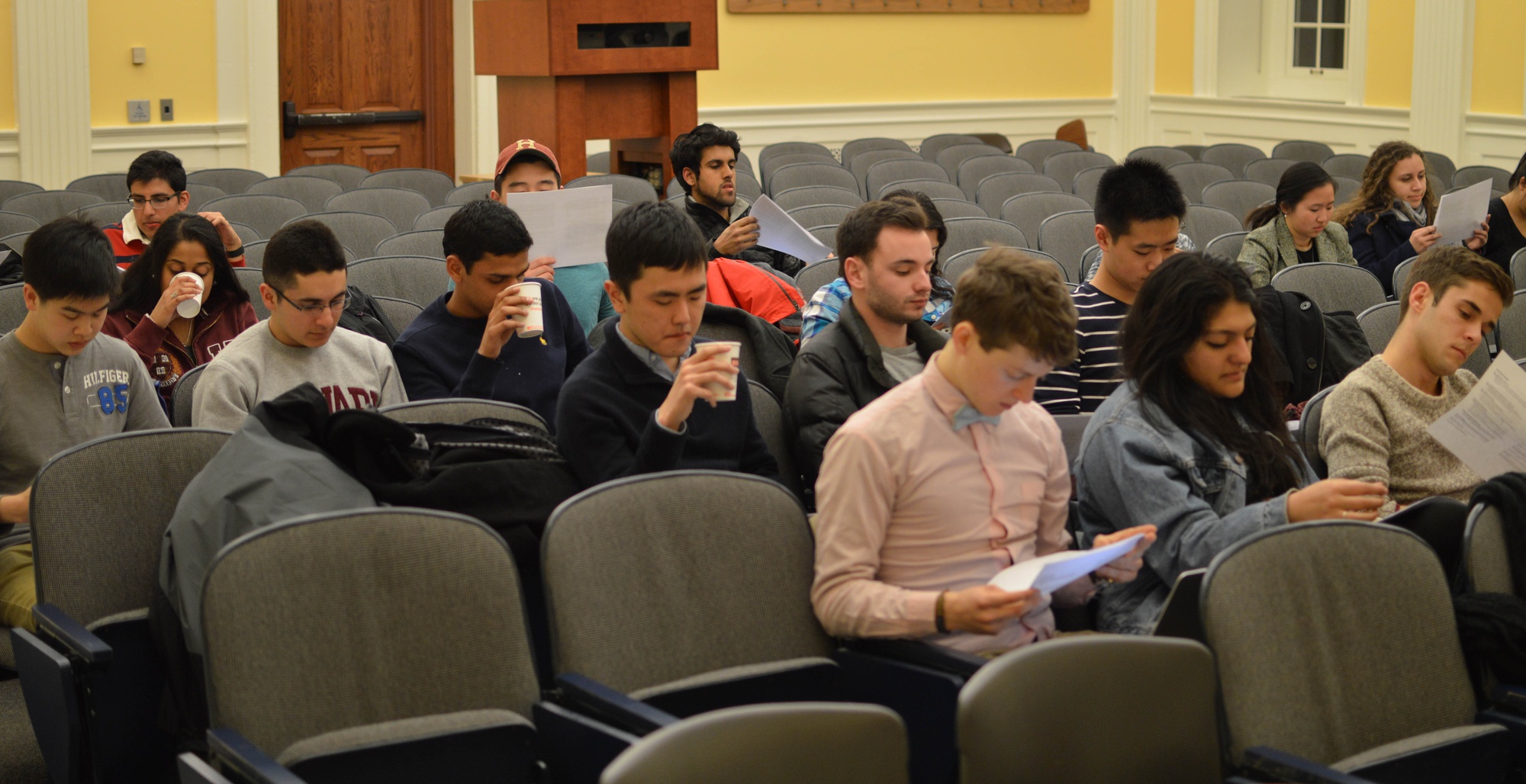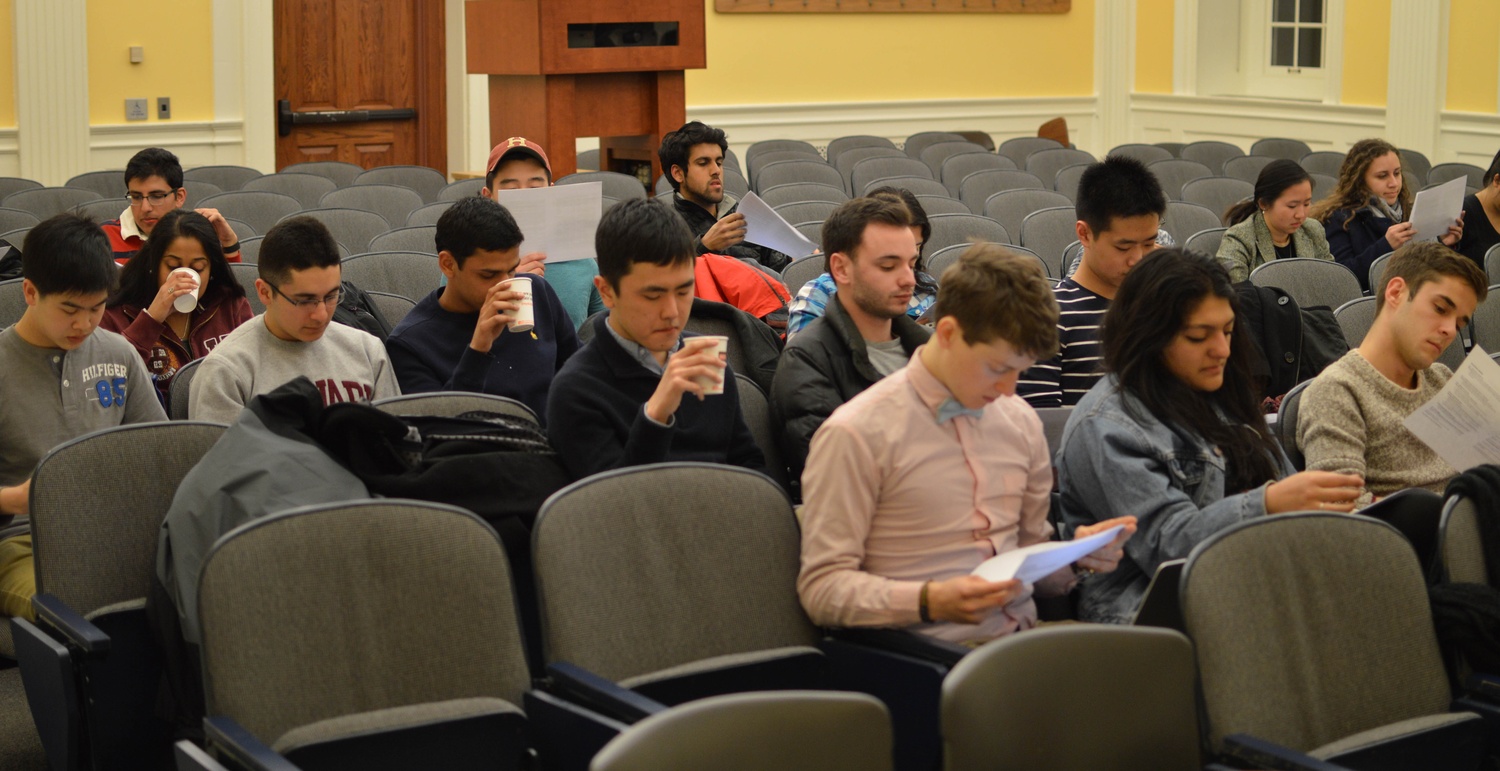
News
Harvard Researchers Develop AI-Driven Framework To Study Social Interactions, A Step Forward for Autism Research

News
Harvard Innovation Labs Announces 25 President’s Innovation Challenge Finalists

News
Graduate Student Council To Vote on Meeting Attendance Policy

News
Pop Hits and Politics: At Yardfest, Students Dance to Bedingfield and a Student Band Condemns Trump

News
Billionaire Investor Gerald Chan Under Scrutiny for Neglect of Historic Harvard Square Theater
UC Makes Strides Toward Diversity, but Gender Imbalance Remains

Although the Undergraduate Council has more black members this year than last, following the close of its general elections last Friday at noon, it still has notable gender gap, with women making up just 35 percent of its membership.
According to Pforzheimer House representative William A. Greenlaw ’17, who briefed the Council on the diversity of its membership at its first full general meeting on Sunday, seven students who are black now sit on the UC, compared to just one last year. Black students now comprise 14 percent of the body, a larger proportion than at the College at large.

“Last year I used to joke that I was the leader of the black caucus because I was the only member of the black caucus on the UC,” Greenlaw said Sunday. “The UC, much like regular, real-life legislative bodies, occasionally struggles with diversity, and so we made it a mission to increase diversity on the UC.”
Prior to this fall’s election, UC President Ava Nasrollahzadeh ’16 and Vice President Dhruv P. Goyal ’16 noted a need to increase diversity on the Council and promised to employ a “much more robust recruitment campaign” in an effort to attract a more diverse group of candidates.
But despite the added racial diversity to this year’s group, as has been true in some recent years, the UC is still predominantly male, with men outnumbering women by a ratio of just under two to one. Thirty-five percent of representatives on the Council this fall, including several members of its leadership, are women, according to Nasrollahzadeh.
This gender imbalance is not characteristic of only the newest Council; historically, the UC has sometimes struggled with recruiting women to join, with a 2013 internal report calling the body long “a male-skewed leadership organization.”
Although the UC neared gender parity in 2013, last fall, the Council recorded its largest gender imbalance in four years, with just about one-third of its membership made up of women.
In response, Council leaders—including its 2014 president and vice president, both men—questioned why women’s representation on the Council had decreased so notably year over year, with then-Vice President Sietse K. Goffard ’15 calling it “definitely an issue of concern.”
At the time, then-President Gus A. Mayopoulos ’15 suggested that the fact that two men headed the Council may have encouraged more male candidates to run; just more than one in four candidates that fall were women.
This year, one woman and one man sit atop the UC’s leadership. Still, the gender imbalance is close to the same. Nasrollahzadeh wrote in an email that she acknowledged that “parity had not been established” and that the Council “will continue to push for a more diverse representation in our next recruitment effort during midterm elections,” which occur early next semester.
—Staff writer Jalin P. Cunningham can be reached at jalin.cunningham@thecrimson.com. Follow her on Twitter @JalinCunningham.
Want to keep up with breaking news? Subscribe to our email newsletter.
From Our Advertisers

Over 300+ courses at prestigious colleges and universities in the US and UK are at your disposal.

Where you should have gotten your protein since 1998.

Serve as a proctor for Harvard Summer School (HSS) students, either in the Secondary School Program (SSP), General Program (GP), or Pre-College Program.

With an increasingly competitive Law School admissions process, it's important to understand what makes an applicant stand out.

Welcome to your one-stop gifting destination for men and women—it's like your neighborhood holiday shop, but way cooler.

HUSL seeks to create and empower a community of students who are seeking pathways into the Sports Business Industry.
